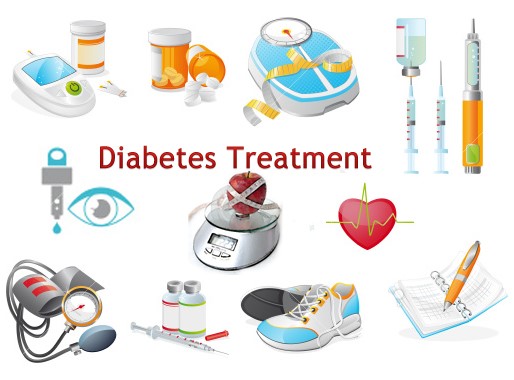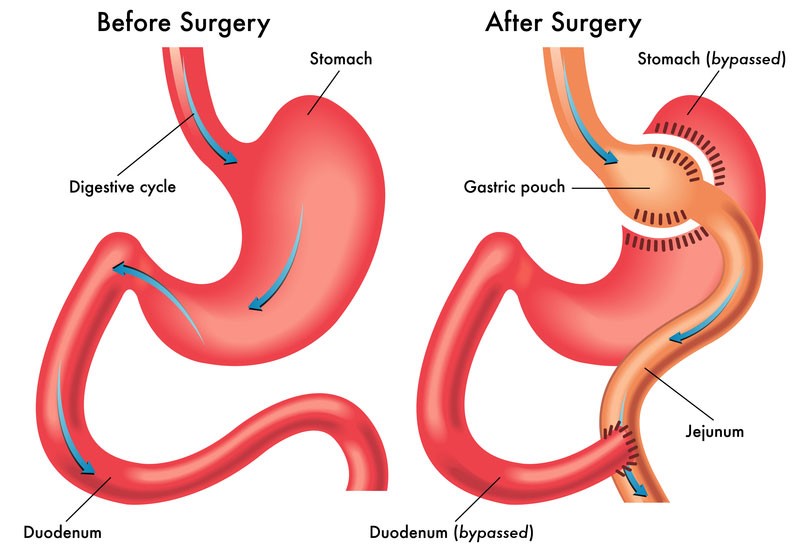Diabetes is a disease that occurs when your blood glucose, also called blood sugar, is too high. Blood glucose is your main source of energy and comes from the food you eat. Insulin, a hormone made by the pancreas, helps glucose from food get into your cells to be used for energy. Sometimes your body doesn’t make enough—or any—insulin or doesn’t use insulin well. Glucose then stays in your blood and doesn’t reach your cells.
Over time, having too much glucose in your blood can cause health problems. Although diabetes has no cure, you can take steps to manage your diabetes and stay healthy. Sometimes people call diabetes “a touch of sugar” or “borderline diabetes.” These terms suggest that someone doesn’t really have diabetes or has a less serious case, but every case of diabetes is serious.

The most common types of diabetes are type 1, type 2, and gestational diabetes.
If you have type 1 diabetes, your body does not make insulin. Your immune system attacks and destroys the cells in your pancreas that make insulin. Type 1 diabetes is usually diagnosed in children and young adults, although it can appear at any age. People with type 1 diabetes need to take insulin every day to stay alive.
If you have type 2 diabetes, your body does not make or use insulin well. You can develop type 2 diabetes at any age, even during childhood. However, this type of diabetes occurs most often in middle-aged and older people. Type 2 is the most common type of diabetes.
Gestational diabetes develops in some women when they are pregnant. Most of the time, this type of diabetes goes away after the baby is born. However, if you’ve had gestational diabetes, you have a greater chance of developing type 2 diabetes later in life. Sometimes diabetes diagnosed during pregnancy is actually type 2 diabetes.
You are more likely to develop type 2 diabetes if you are age 45 or older, have a family history of diabetes, or are overweight. Physical inactivity, race, and certain health problems such as high blood pressure also affect your chance of developing type 2 diabetes. You are also more likely to develop type 2 diabetes if you have prediabetes or had gestational diabetes when you were pregnant. Learn more about risk factors for type 2 diabetes.
Over time, high blood glucose leads to problems such as
To diagnose type 2 diabetes, you’ll be given a:
Screening is also recommended for people who are under 45 and overweight if there are other heart disease or diabetes risk factors present, such as a sedentary lifestyle, a family history of type 2 diabetes, a personal history of gestational diabetes or blood pressure above 140/90 millimeters of mercury (mm Hg).
If you’re diagnosed with diabetes, the doctor may do other tests to distinguish between type 1 and type 2 diabetes — since the two conditions often require different treatments.
Compared with repeated daily blood sugar tests, the A1C test is a better indicator of how well your diabetes treatment plan is working. An elevated A1C level may signal the need for a change in your medication, meal plan or activity level.
In addition to the A1C test, your doctor will take blood and urine samples periodically to check your cholesterol levels, thyroid function, liver function and kidney function. The doctor will also assess your blood pressure. Regular eye and foot exams also are important.
Management of type 2 diabetes include:
Contrary to popular perception, there’s no specific diabetes diet. However, it’s important to center your diet on these high-fiber, low-fat foods:
Low glycaemic index foods also may be helpful. The glycemic index is a measure of how quickly a food causes a rise in your blood sugar. Foods with a high glycemic index raise your blood sugar quickly. Low glycemic index foods may help you achieve a more stable blood sugar. Foods with a low glycemic index typically are foods that are higher in fibre.
A registered dietitian can help you put together a meal plan that fits your health goals, food preferences and lifestyle. He or she can also teach you how to monitor your carbohydrate intake and let you know about how many carbohydrates you need to eat with your meals and snacks to keep your blood sugar levels more stable.
Everyone needs regular aerobic exercise, and people who have type 2 diabetes are no exception. Get your doctor’s OK before you start an exercise program. Then choose activities you enjoy, such as walking, swimming and biking. What’s most important is making physical activity part of your daily routine.
Aim for at least 30 minutes of aerobic exercise five days of the week. Stretching and strength training exercises are important, too. If you haven’t been active for a while, start slowly and build up gradually.
combination of exercises — aerobic exercises, such as walking or dancing on most days, combined with resistance training, such as weightlifting or yoga twice a week — often helps control blood sugar more effectively than either type of exercise alone.
Remember that physical activity lowers blood sugar. Check your blood sugar level before any activity. You might need to eat a snack before exercising to help prevent low blood sugar if you take diabetes medications that lower your blood sugar.
Depending on your treatment plan, you may need to check and record your blood sugar level every now and then or, if you’re on insulin, multiple times a day. Ask your doctor how often he or she wants you to check your blood sugar. Careful monitoring is the only way to make sure that your blood sugar level remains within your target range.
Sometimes, blood sugar levels can be unpredictable. With help from your diabetes treatment team, you’ll learn how your blood sugar level changes in response to food, exercise, alcohol, illness and medication.
Some people who have type 2 diabetes can achieve their target blood sugar levels with diet and exercise alone, but many also need diabetes medications or insulin therapy. The decision about which medications are best depends on many factors, including your blood sugar level and any other health problems you have. Your doctor might even combine drugs from different classes to help you control your blood sugar in several different ways.
Examples of possible treatments for type 2 diabetes include:
There are many types of insulin, and they each work in a different way. Options include:
Discuss the pros and cons of different drugs with your doctor. Together you can decide which medication is best for you after considering many factors, including costs and other aspects of your health.
In addition to diabetes medications, your doctor might prescribe low-dose aspirin therapy as well as blood pressure and cholesterol-lowering medications to help prevent heart and blood vessel disease.

Women with type 2 diabetes may need to alter their treatment during pregnancy. Many women will require insulin therapy during pregnancy. Cholesterol-lowering medications and some blood pressure drugs can’t be used during pregnancy.
If you have signs of diabetic retinopathy, it may worsen during pregnancy. Visit your ophthalmologist during the first trimester of your pregnancy and at one year postpartum.
Because so many factors can affect your blood sugar, problems sometimes arise that require immediate care, such as:
Check your blood sugar level regularly, and watch for signs and symptoms of low blood sugar — sweating, shakiness, weakness, hunger, dizziness, headache, blurred vision, heart palpitations, slurred speech, drowsiness, confusion and seizures.
If you develop hypoglycemia during the night, you might wake with sweat-soaked pajamas or a headache. Due to a natural rebound effect, nighttime hypoglycemia might cause an unusually high blood sugar reading first thing in the morning.
If you have signs or symptoms of low blood sugar, drink or eat something that will quickly raise your blood sugar level — fruit juice, glucose tablets, hard candy, regular (not diet) soda or another source of sugar. Retest in 15 minutes to be sure your blood glucose levels have normalized.
If they haven’t, treat again and retest in another 15 minutes. If you lose consciousness, a family member or close contact may need to give you an emergency injection of glucagon, a hormone that stimulates the release of sugar into the blood.

Director of Diabetes Speciality Center
Diabetologist, General Physician
MBBS, Diploma in Cardiology
Diabetes Speciality Center
Years Of Experience : 39

Senior Consultant – Diabetologist
Diabetologist, Consultant Physician, General Physician
MBBS, MD – General Medicine
SSB Multispeciality Hospital
Years Of Experience : 23

Head of Diabetic Foot & Wound Care Management
Internal Medicine, Special Interest in Diabetology
MBBS, MD – General Medicine
BLK-Max Super Speciality Hospital
Years Of Experience : 36
WhatsApp us